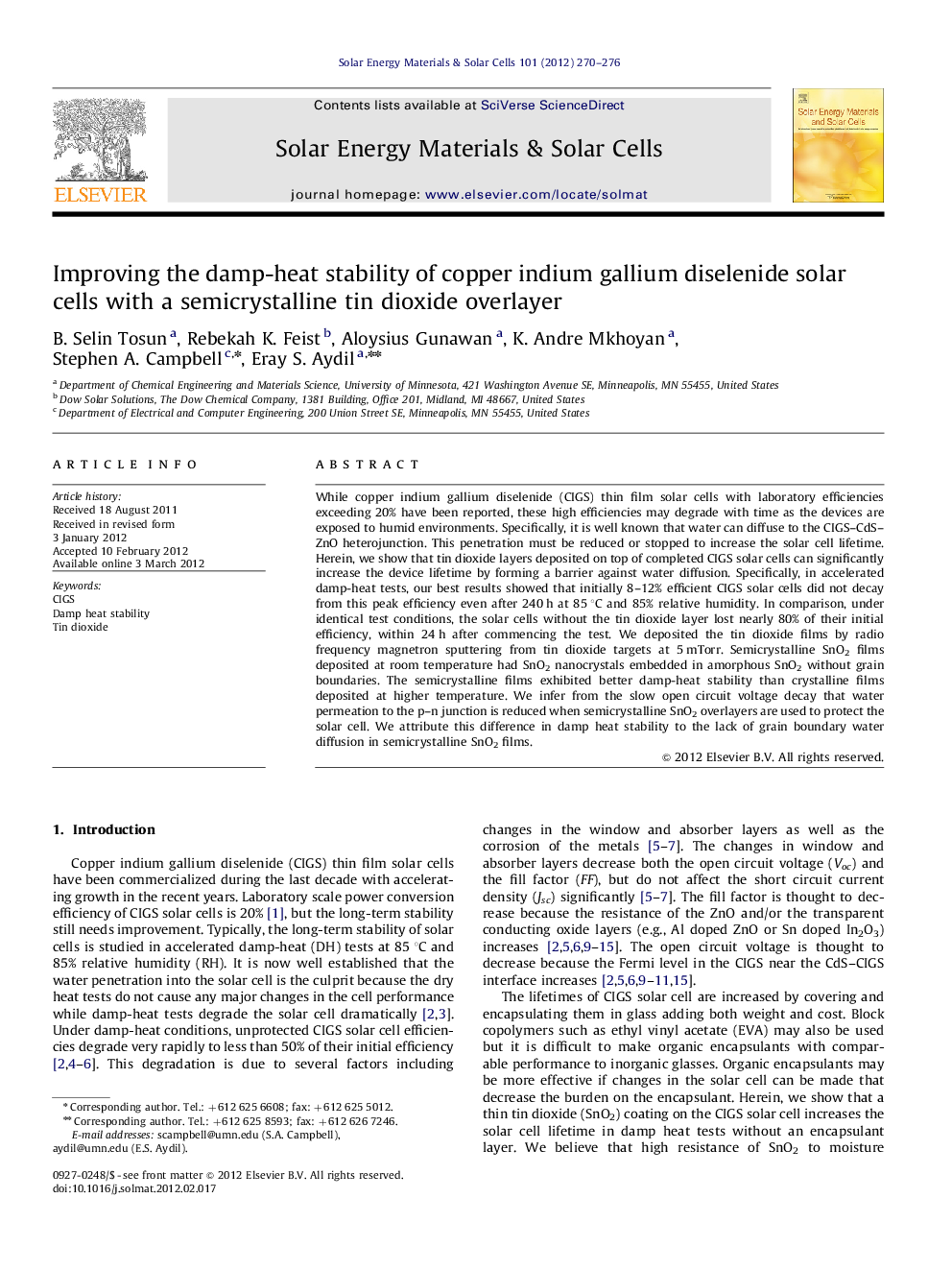| Article ID | Journal | Published Year | Pages | File Type |
|---|---|---|---|---|
| 79307 | Solar Energy Materials and Solar Cells | 2012 | 7 Pages |
While copper indium gallium diselenide (CIGS) thin film solar cells with laboratory efficiencies exceeding 20% have been reported, these high efficiencies may degrade with time as the devices are exposed to humid environments. Specifically, it is well known that water can diffuse to the CIGS–CdS–ZnO heterojunction. This penetration must be reduced or stopped to increase the solar cell lifetime. Herein, we show that tin dioxide layers deposited on top of completed CIGS solar cells can significantly increase the device lifetime by forming a barrier against water diffusion. Specifically, in accelerated damp-heat tests, our best results showed that initially 8–12% efficient CIGS solar cells did not decay from this peak efficiency even after 240 h at 85 °C and 85% relative humidity. In comparison, under identical test conditions, the solar cells without the tin dioxide layer lost nearly 80% of their initial efficiency, within 24 h after commencing the test. We deposited the tin dioxide films by radio frequency magnetron sputtering from tin dioxide targets at 5 mTorr. Semicrystalline SnO2 films deposited at room temperature had SnO2 nanocrystals embedded in amorphous SnO2 without grain boundaries. The semicrystalline films exhibited better damp-heat stability than crystalline films deposited at higher temperature. We infer from the slow open circuit voltage decay that water permeation to the p–n junction is reduced when semicrystalline SnO2 overlayers are used to protect the solar cell. We attribute this difference in damp heat stability to the lack of grain boundary water diffusion in semicrystalline SnO2 films.
Graphical AbstractFigure optionsDownload full-size imageDownload as PowerPoint slideHighlights► A thin tin dioxide layer on CIGS solar cells improves their damp-heat stability. ► Tin dioxide films are semicrystalline and do not have grain boundaries. ► Improvement is due to lack of grain boundary diffusion of water in these films.
